Wooden kitchen tables: a variety of models, advice on selection and care

The heart of the kitchen is the dining table. Despite the variety of models, the classic in the form of a wooden table does not give up its positions today.

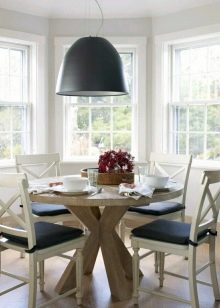
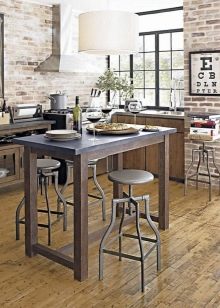
Advantages and disadvantages
Wooden furniture looks impressive and respectable. Thanks to the natural pattern and special texture, wooden kitchen tables are associated with home comfort and warmth.
The wooden table will be appropriate in all interiors - from classic to modern. You just need to choose the right model. He will not go out of fashion and will always be a symbol of luxury and respectability.
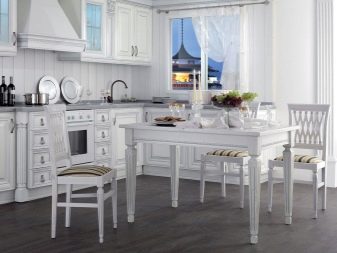
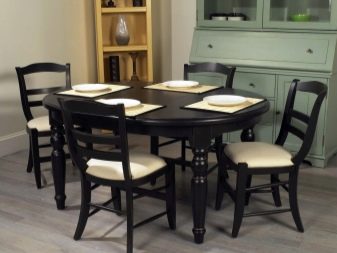
It is distinguished by its strength and durability, and if necessary, such a table can be restored, and more than once. The wood is characterized by impact resistance and a long service life.
The disadvantages include the massiveness and heavy weight of such furniture. Even a small table will weigh a lot. We must not forget that wood is a flammable material. You cannot put hotter on it - a trace will remain.
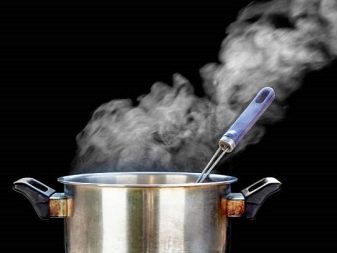
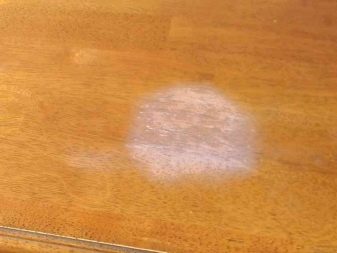
Despite its strength, the surface of such a table can be easily scratched. Finally, wood furniture requires careful handling and regular maintenance.
The naturalness of the material, the noble appearance and the laboriousness of manufacturing - all this explains the rather high cost of a wooden table.

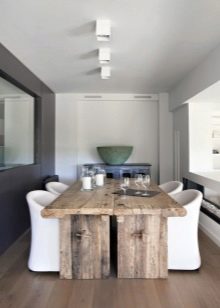
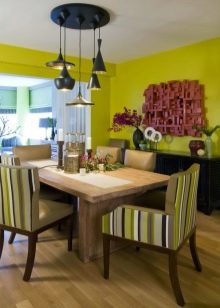
Types of structures
For a small family or small premises, it is convenient to use a folding table. As a rule, assembled it is used for daily meals. And when guests come and a large table is required, the same product is laid out. Its main advantage is versatility, multifunctionality, practicality.
The main requirements for such a table are a solid tabletop, massive legs that can withstand additional loads, and a metal folding mechanism.
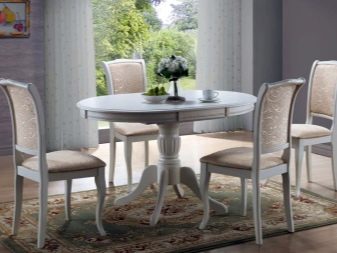
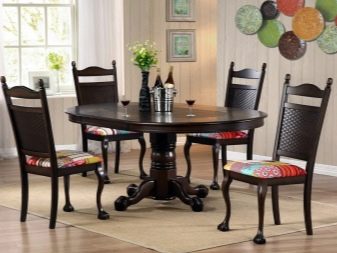
A folding table should be distinguished from a sliding table. The first has the form of a book, according to this principle, rectangular products are usually made. Part of the table top is lowered, but when it rises, an additional leg extends. In a sliding table, only the table top changes, it expands, increasing in size.
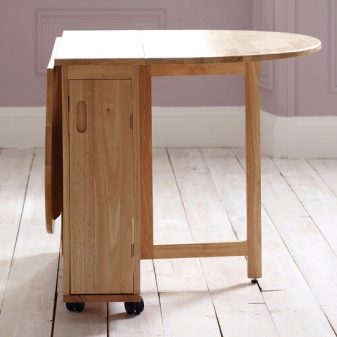
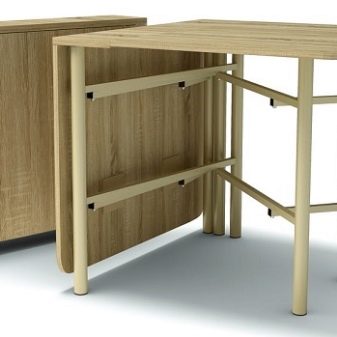
Among the varieties can be distinguished practical tables with a drawer or whatnot. It is convenient to store cutlery and napkins in the drawer. However, such a table is inconvenient to use if you cover it with a tablecloth. The latter will have to be lifted every now and then.
Products with a bookcase are placed against the wall, they are equipped with shelves or a semblance of a sideboard. They can also store cutlery, spices, a bread box and even utensils. Such models are especially convenient when space is limited.
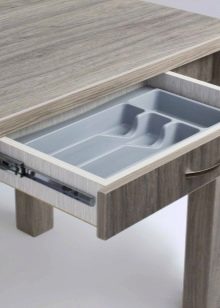
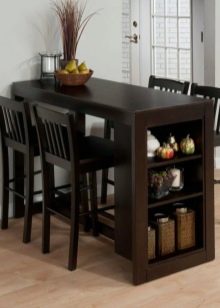
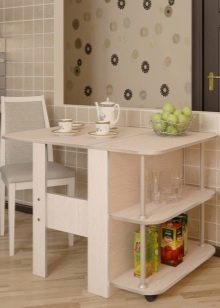
What types of trees are used?
The dining table can be made from hardwood or softwood. Hard varieties are oak, beech, elm, larch, mountain ash, birch. Softwoods include coniferous wood, as well as alder and willow. The method of processing depends on the value of the density of wood. For example, softwood products require more layers of varnish. For hard ones, 1-2 layers are enough.
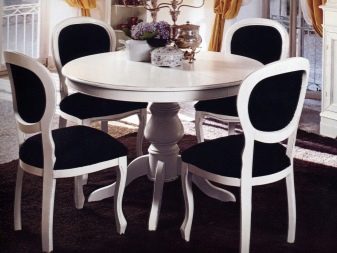
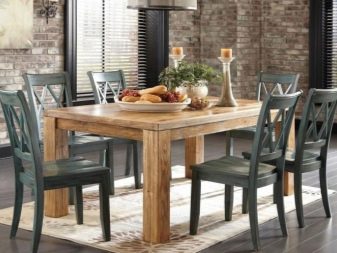
The color and texture of the table are also influenced by the type of wood. Pine, birch, apple trees have a light shade. Connoisseurs of chocolate tones can recommend products made of oak, plum, teak, mahogany.
With the help of wood stain, colored varnish and various technologies, you can change the natural shade of the wood.
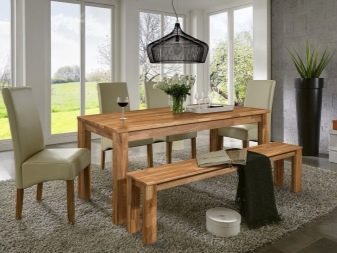
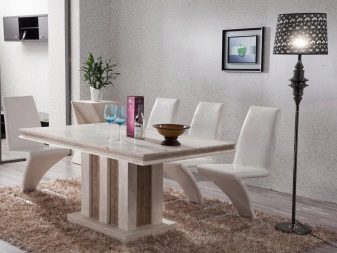
Among the most common materials of solid wood tables, the following are distinguished.
Oak
One of the most optimal materials for table production. Refers to hard hardwood, and therefore is distinguished by its strength and durability. The finished product is resistant to decay. The tree can be stained in water; when using the stain, the oak takes on a beautiful shade ranging from golden brown to almost black.
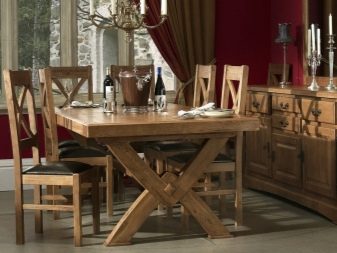
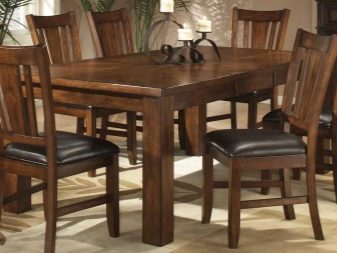
The bog oak looks especially attractive when cut radially, then rays are formed on the surface, diverging in different directions. Since oak is susceptible to the negative influence of moisture, the surface of the table is varnished. In addition to protecting it, it also enhances the natural grain of the wood.
Separately, it is worth highlighting bleached oak, which looks like an artificially aged surface.
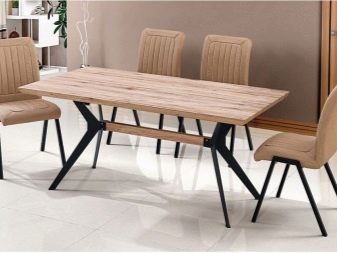
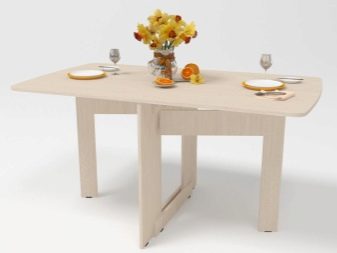
Beech
Another kind of hard rock comparable in strength to oak. However, in contrast to it, beech has a smaller variety of shades, is more prone to decay, and when it dries, it deforms quite strongly. Like oak, it is well impregnated with varnish and stains.
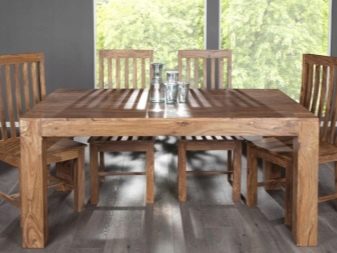
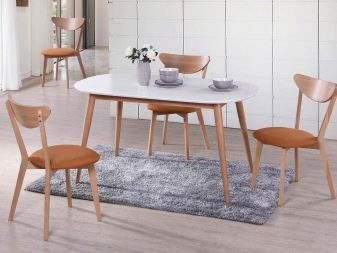
Ash
Hard hardwood, no less durable than oak and beech. Ash is lighter than beech, has a rich and varied texture, with a slightly grayish tint.... Ash is dense, durable. However, due to its low porosity, ash is poorly impregnated with varnish. Of the advantages - it does not deform when dry.

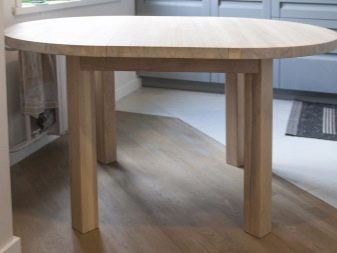
Nut
It is characterized by density, strength and durability, has a luxurious texture and pleasant color. The walnut is well processed - impregnated, polished.
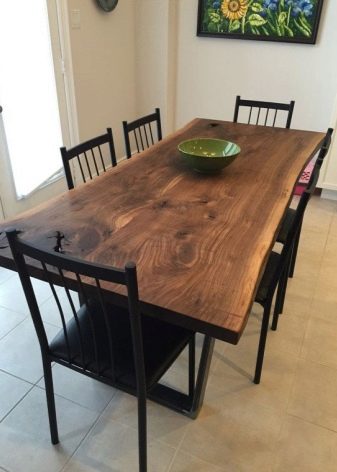
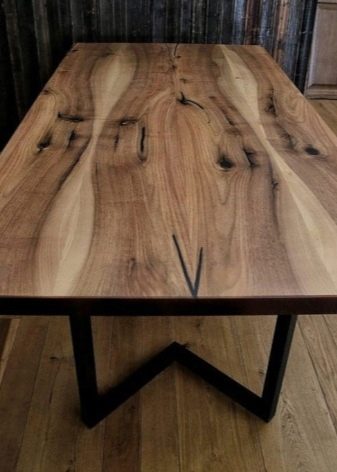
Pine
It belongs to conifers, soft, pliable. Such a table is very popular due to its low cost. It can be processed well, but if the table is made of low-grade raw materials, resin can be released.
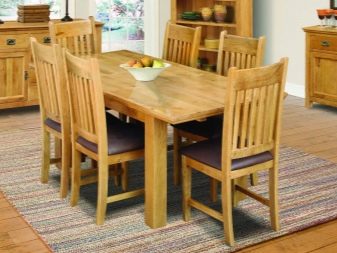
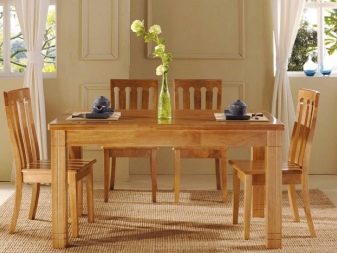
Larch
Another type of coniferous species. At the same time, its strength is not inferior to oak. It is convenient to process, like all conifers, it is characterized by high resin content, and therefore not affected by woodworms.
Larch is prone to drying out, during which cracks and deformations are inevitable.

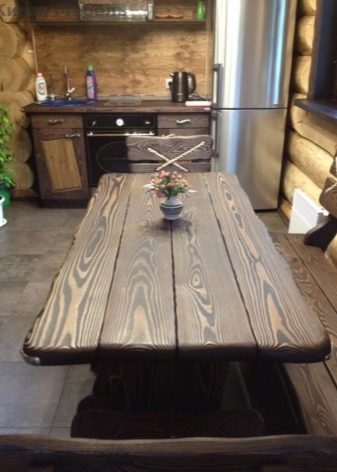
Shapes and sizes
The classic shape of a wooden table is rectangular. The product can have sharp or rounded corners. In addition, today designers offer products in other forms.
Among them is a round model that will harmoniously fit into the classic and a number of modern interiors (minimalism, shabby chic, rustic styles). Since such furniture cannot be attached to the wall, it is suitable for medium-sized rooms and fairly spacious rooms.
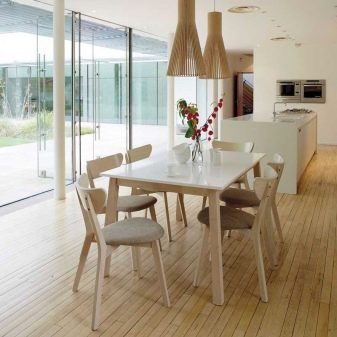
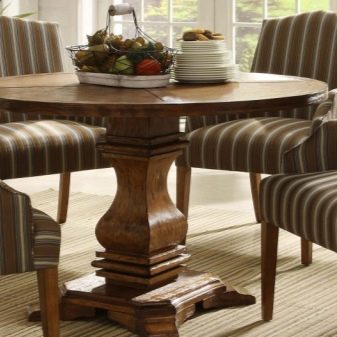
The optimal size for a round product is considered to be a diameter of up to 1.5 meters. Otherwise, those sitting at the table will have to reach for the cutlery and dishes on the table.
If you like flowing, rounded shapes, but a round table is too small or takes a long time, then you should consider buying an oval model. Among the advantages is the ability to attach to the wall (suitable even for small rooms), use in a family with small children (the table has no corners). Moreover, depending on the length, such a table can accommodate a lot of people who will be comfortable.
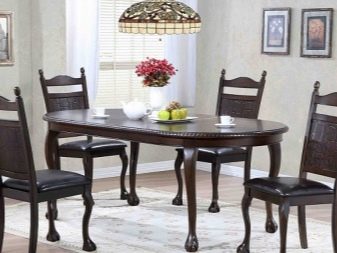
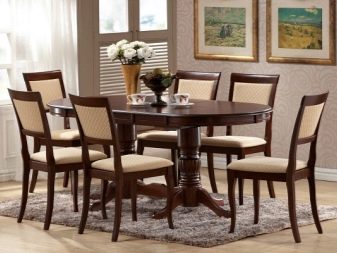
Another option for a table with smooth shapes is a semicircle. It can be attached to the wall.
The square model, depending on the size and location, is suitable for both large and small rooms. In the latter, you can choose a product measuring 90x90 cm.For a rectangular version, the size 120x70 is considered convenient. Such furniture will be comfortable for a family of 4-5 people.
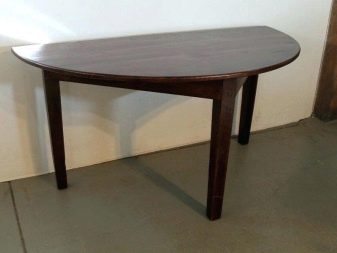
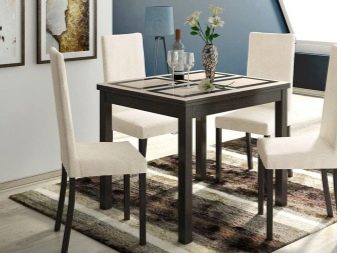
Usually tables in the shape of a circle have one leg. In most cases, it is carved and decorated. All other varieties have 1 to 4 legs. Massive products are often additionally supported by balusters.
Design
Tables made of wood can differ not only in the features of the mechanism, shape, size, but also in shade. For classic, Scandinavian or rustic interiors, you can purchase a snow-white table. Undoubtedly, it will become the accent of the room, bring grace and nobility into it. However, such furniture will require careful maintenance, because even small dirt and scratches will be especially noticeable on it.
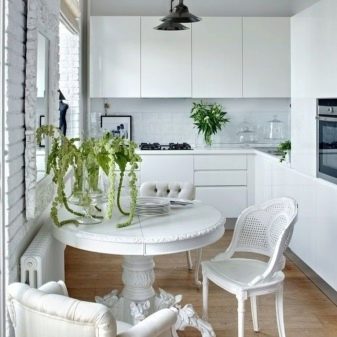

The brown version of the familiar woody shade can be considered a classic. It looks harmonious in any interior and goes well with most colors.
The table in black looks noble and stylish, especially when it comes to models with a matte surface.
Although it should be understood that he is quite capricious in his care.
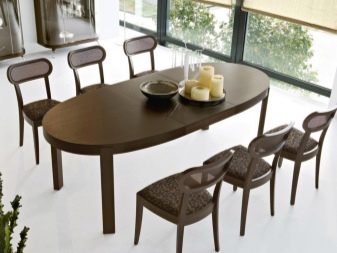
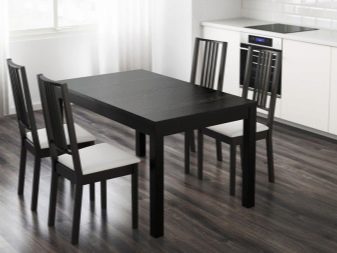
How to choose?
For a small room, choose a compact square or rectangular table. It should not have decor, massive legs. You can also consider the option of a folding model. As for the color, it can be different. The main thing is to fit into the interior and color scheme of the room.
Recommended so that a distance of at least 80 cm remains between the wall and the table. And when people are sitting at the table, a passage of 80-100 cm should remain around them. Thus, the issue of ergonomics should be one of the key issues when choosing furniture.
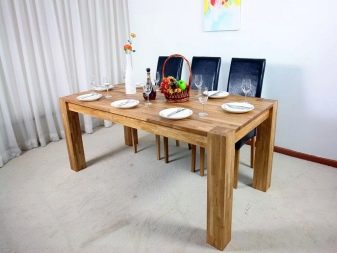

The size of the table also depends on the number of people sitting at it. One person needs at least 60 cm in length and 40 cm in width. Between the chairs of the seated should be 30-50 cm. Knowing these requirements, it is easy to calculate the dimensions of the table.
As already mentioned, round and rectangular tables are suitable for spacious rooms, square and rectangular for small homes.
If there are smooth shapes in the design of the room, then it is better to choose furniture with smooth outlines and without corners.
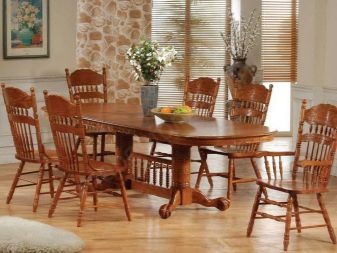
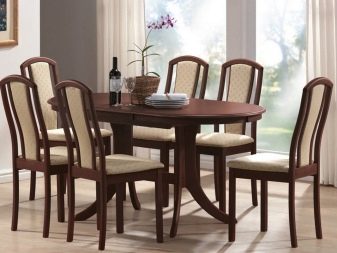
When choosing the material for the product, a balance should be found between practicality and the cost of the product. Models made of wood and beech are of high quality, but quite expensive. The premium options include a mebrau table. The democratic options include pine and birch tables.
Expensive, but durable and durable - the larch option. In addition, the wood contains gum - a natural antiseptic. Thanks to this, the wood has additional protection against decay and damage by pathogenic microorganisms.

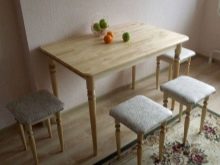
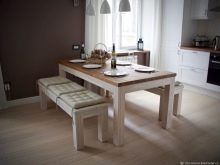
Care Tips
Varnishes are used to protect the tree and extend its life. Today, the best option is considered to be a natural plant-based impregnation varnish (beeswax, natural vegetable oils). Thanks to this, the table is protected from moisture, mold and mildew.
Interior wood varnish should be preferable to a special one, which is approved for surfaces in contact with food.
If the task is to change the shade of the furniture, first it is covered with colored glaze, and then with a transparent varnish.
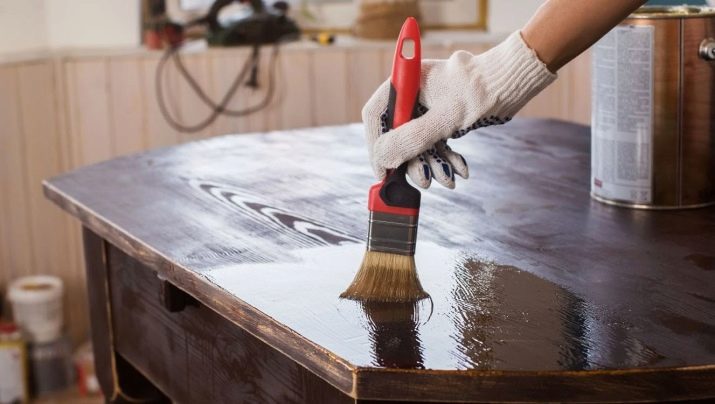
Do not cut on a wooden table, place hot pots, pans, etc. on it. If stains come in, it is important to try to remove them as quickly as possible to prevent them from absorbing into the wood. Wipe the surface with a soft, damp cloth, and then wipe it dry.
It is unacceptable to use abrasive cleaning agents, analogues containing chlorine, solvents. It is best to use soapy water for cleaning.
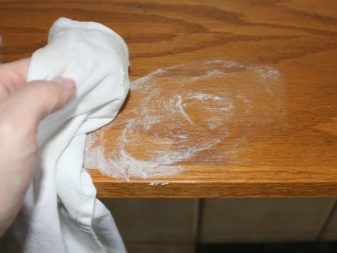
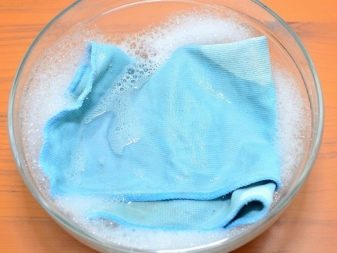
Despite careful use, over time, the wooden table requires periodic renewal. If the countertop has darkened or absorbed moisture, this should be a reason to replace the varnish coat.
The first step is to remove the old coating using a fine-grained sandpaper. The cleaned, dust-free and dry surface is treated antiseptic impregnation. After it dries, you can varnish the furniture. It is advisable to use the same composition every time, at least - do not mix water-based and alkyd-based varnishes.

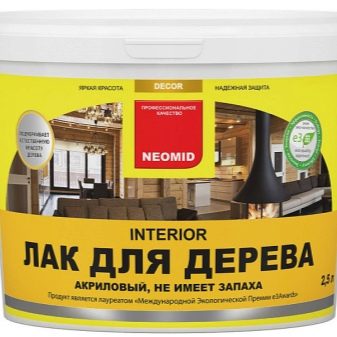
Even before buying, it is worth clarifying - a lacquered or oily tabletop for the model of interest. The first will last for 10 years without requiring renewal. Surfaces coated with oil or wax require similar wiping every 2-3 months.
For information on how to make a wooden kitchen table with your own hands, see the next video.








